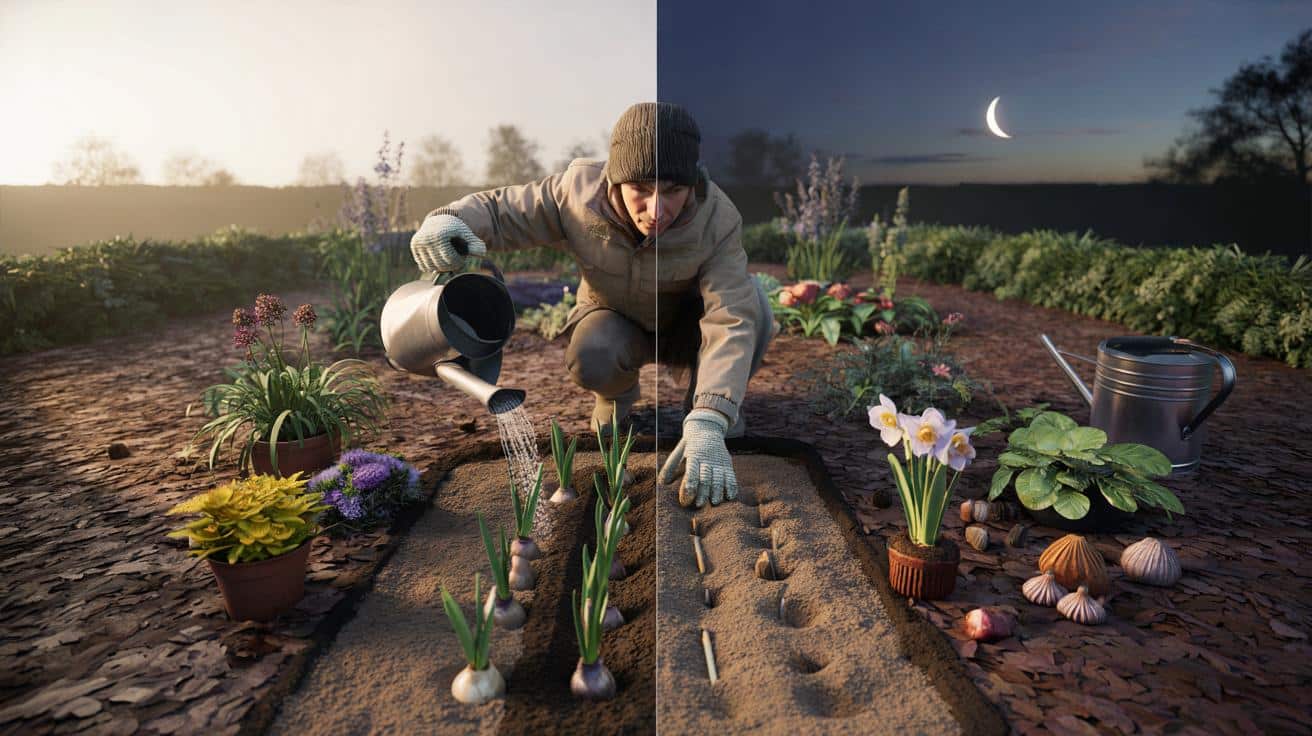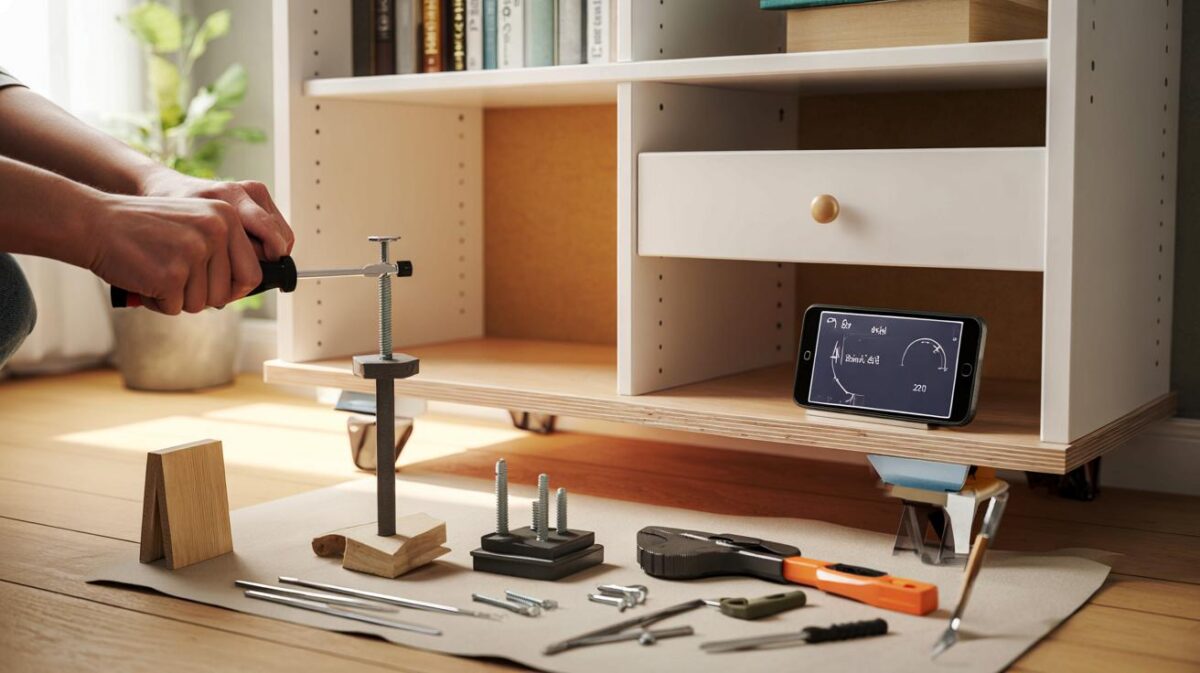Cool soil, steady moisture and short days give your perennials a quiet, powerful start.
Across the UK, a brief late‑october window can lock in long‑lived colour with less work. Planting hardy perennials and spring bulbs in this short spell builds roots while growth above ground pauses, setting the stage for stronger, earlier displays when light returns.
Why the last week of october changes everything
From 25 to 31 October, the soil still holds warmth yet rainfall is regular. Plants use that balance to push roots deeper without wasting energy on leaves. Beds settle before winter, and crowns sit snug under a protective mulch. Come March, they wake ready to surge.
The sweet spot is simple: roots grow, tops rest. Plant 25–31 October to bank strength for spring.
This timing often reduces irrigation needs in April and May, because roots reach moisture deeper down. Many gardeners report cutting watering by a third, sometimes closer to two‑fifths, in average seasons. Early planting also means fewer gaps, because losses to frost heave and waterlogging drop when holes are properly backfilled and mulched now.
A quiet nod to the moon
Plenty of growers plan around the lunar cycle. In 2025, the final week of October sits in a waning phase, a period many associate with stronger root work. It costs nothing to try. If you like the method, mark next year’s diary and compare beds planted in that week with those planted outside it.
Pick plants that endure year after year
Perennials that shrug off neglect
Choose species that cope with dry spells, cold snaps and the odd missed watering can. Hardy cranesbill geraniums knit borders together and flower for months. Rudbeckia brings bold daisy heads and copes with sun. Salvia nemorosa carries spires that repeat when deadheaded. Achillea offers flat umbels loved by pollinators. Heuchera brightens shade with evergreen leaves and airy wands.
- Sunny beds: rudbeckia, salvia nemorosa, achillea, hardy geranium (most cultivars).
- Light shade or north walls: heuchera, hardy geranium (macrorrhizum, phaeum), epimedium.
- Dry banks and gravel: achillea, thyme, nepeta, sedum (Hylotelephium).
Bulbs that naturalise without fuss
Botanical tulips settle better than show types and return reliably on free‑draining soil. Narcissus tolerate grass and poorer ground, and many clumps bulk up quickly. Crocosmia corms form generous fans and glow late in summer. Allium add height and geometry, then feed bees when borders are thin on nectar.
Mix bulbs among perennials to fill spring gaps. Leaves fade as perennials rise, hiding the messy bit.
Soil preparation that pays back
Before you plant
Open the soil to a spade’s depth across the bed. Break clods. Remove roots and stones. Blend in a bucket of garden compost per square metre to improve structure. On heavy clay, add a couple of handfuls of coarse grit around bulb pockets to stop winter sitting water.
Aim for planting holes with firm sides and a gently firmed base. Roots should meet contact, not an air void. Water once, then mulch with 3–5 cm of leaves, straw or chipped bark to buffer temperature swings.
Pitfalls to avoid
- Do not plant into saturated ground or during a freeze; wait for a drier, milder hour.
- Do not bury crowns of perennials; set the crown level with the final soil surface.
- Do not cram plants; overcrowding weakens airflow and invites rot.
- Do not drown fresh plantings; a single thorough watering settles soil around roots.
| Plant type | Depth | Spacing | Notes |
|---|---|---|---|
| Narcissus bulbs | 10–15 cm | 10–15 cm | Good in grass; leave leaves until they yellow. |
| Allium bulbs | 10–15 cm | 20–30 cm | Enjoys drainage; striking in drifts of five or more. |
| Botanical tulips | 8–12 cm | 8–12 cm | Free‑draining soil extends their life. |
| Crocosmia corms | 8–10 cm | 20–30 cm | Divide every few years if clumps congest. |
| Perennial plugs/pots | Crown at soil level | 30–45 cm | Water in once; mulch to keep even moisture. |
Rule of thumb for bulbs: plant two to three times the bulb’s height, pointy end up.
Action plan for the 7‑day window
Step‑by‑step for a fast, tidy autumn planting
- Mark beds and curves with sand or string so spacing reads clearly from above.
- Loosen the top 20 cm and incorporate compost where soil is thin or lifeless.
- Set bulbs first, then perennials, so heights stagger and gaps vanish in spring.
- Backfill, firm gently, and water once to settle soil around roots and bulbs.
- Mulch evenly; leave a small bare ring around crowns to prevent rot.
- Label groups now; winter hides evidence and memory fades.
Shielding plants before real cold bites
In frosty districts, pop cloches over fresh divisions of tender-ish perennials, or stretch horticultural fleece on pegs for the first hard snaps. On sloping plots that shed mulch, pin a light net over leaves to hold them in place until rain mats them down. Containers benefit from pot feet to keep drainage free.
What you are likely to see by spring
Plants set this week usually break dormancy earlier and flower more evenly across the bed. Bulbs thread between crowns and lift the whole picture before perennials fill out. Many borders need little or no watering by May because roots mined moisture in winter when the soil stayed open.
By late spring, well‑timed plantings often need no more than a weekly finger test for moisture.
Weeds also reduce. Mulch blocks winter germination, and dense growth closes the canopy sooner. That combination cuts hoeing and keeps soil life busier under cover, which improves structure for the long haul.
Extra help: pairing ideas, quick costs and a small‑space plan
Three reliable pairings for a long season
- Under a young tree: narcissus ‘Thalia’ with hardy geranium macrorrhizum for April to July interest.
- Hot sunny strip: allium ‘Purple Sensation’ through salvia nemorosa ‘Caradonna’, followed by achillea ‘Terracotta’.
- Shade by a wall: botanical tulips with heuchera ‘Caramel’, then ferns rise to mask fading leaves.
Budget and time check
A compact front bed of roughly four square metres might take two hours to prepare and plant. Expect an outlay of £45–£70 for twenty bulbs and five robust perennials if you shop mid‑season. Reusing homemade compost and gathered leaves for mulch keeps costs down and results strong.
Renting or short on soil? Try containers
Large pots planted now perform well on balconies and patios. Use a peat‑free mix with added grit, sink bulbs at depth, and tuck hardy perennials around them. Group pots for wind shelter and insulate with a ring of mulch to buffer cold snaps. In spring, rotate displays so spent bulbs sit behind fresh colour.
Risk check and simple fixes
- If persistent rain floods beds, raise bulbs on a 3–5 cm grit bed and move perennials to the highest spots.
- If mice nibble tulips, mix in allium and narcissus; the scent often discourages raids.
- If slugs target new crowns, lay rough grit rings and deploy nightly hand picks for the first fortnight.








